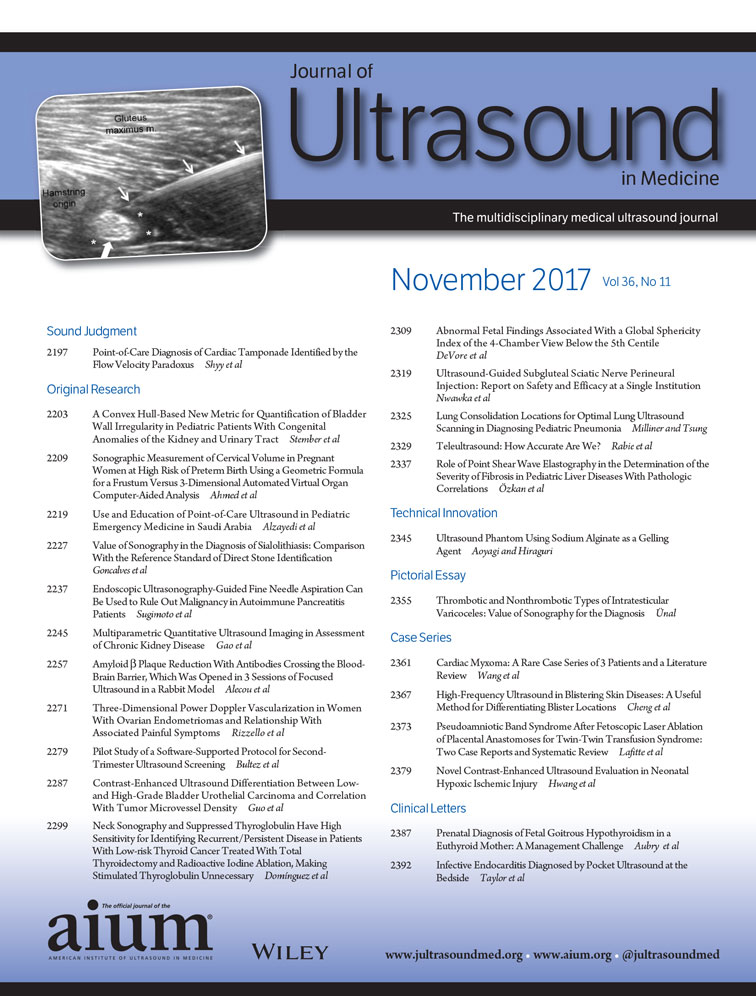Role of Point Shear Wave Elastography in the Determination of the Severity of Fibrosis in Pediatric Liver Diseases With Pathologic Correlations
Abstract
Objectives
Our aims in this study were as follows: (1) to determine the cutoff value that can distinguish between advanced liver fibrosis and normal liver tissue for two different elastographic techniques; (2) to determine the cutoff value that can distinguish mild liver fibrosis from normal liver tissue for the techniques; and (3) to assess tissue stiffness in nonalcoholic fatty liver disease (NAFLD).
Methods
Seventy-five patients assessed for liver biopsy on the same day were evaluated by point shear wave elastography. Thirty-one healthy children and 11 children with NAFLD were also evaluated. A 9L4 transducer with Virtual Touch quantification (VTQ) and Virtual Touch imaging and quantification (VTIQ) modes (Siemens Medical Solutions, Mountain View, CA) was used for quantification.
Results
The shear wave speed of the patients with NAFLD was higher than that of the control group. The only predictive factor for VTQ and VTIQ was the histologic fibrosis score (model-adjusted R2 = 0.56 for VTQ and 0.75 for VTIQ). Shear wave speed cutoffs were 1.67 m/s for VTQ and 1.56 m/s for VTIQ in detecting fibrosis or inflammation and 2.09 m/s for VTQ and 2.17 m/s for VTIQ in discriminating children with low and high histologic liver fibrosis scores.
Conclusions
The VTQ and VTIQ values reveal high-grade histopathologic fibrosis and have high success rates when distinguishing high- from low-grade fibrosis. However, they have limited success rates when differentiating low-grade fibrosis from normal liver tissue.




